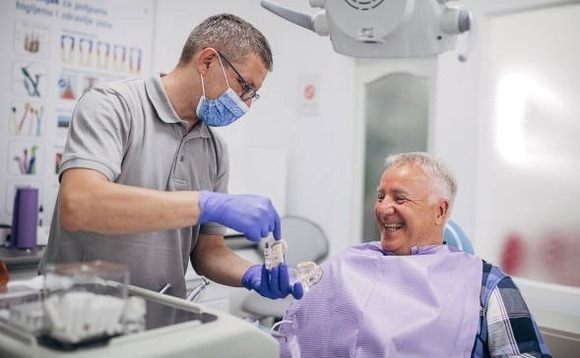
Deal focus: Chamlion leaves its mark on 3D printing

The dental industry was one of few areas in which China’s army of 3D printing start-ups found sufficient addressable demand. Chamlion has risen to the top of the pile by virtue of a timely services pivot
The "Made in China 2025" initiative, launched eight years ago as a rallying call to a manufacturing sector in need of an upgrade, was a game-changer for the 3D printing segment. The shift towards high-tech products and processes encouraged the formation of thousands of start-ups but most of them struggled to find viable application scenarios and ultimately failed.
In the dental industry, however, there was a clear demand trend. From dentures to crowns to clear orthodontic braces, every patient is different so every product can be highly customised. Venture capital investment is alive and well in the dental 3D printing space.
The most recent example is Chamlion Technology, which closed a CNY 236m (USD 34m) Series B round provided by Vertex Ventures China, 3H Health Investment, and Zhencheng Investment. It follows deals such as a CNY 200m Series C for Prismlab and a USD 100m Series D for SprintRay.
Chamlion started fundraising last summer and the round was fully subscribed as early as last October, according to Zhijin Xia, a general partner at Vertex. The valuation was more than CNY 1bn, twice what Chamlion was worth on closing its CNY 140m Series A extension in early 2022.
Xia's team began exploring 3D printing start-ups in 2018 and concluded there were two paths to commercial success. First, companies could concentrate on 3D printing for very high-value items, like metal parts for the aerospace industry. Shanghai-listed Bright Laser Technologies (BLT) is a leading player in this niche. However, it is typical of a subset of companies that have moved past VC funding, Xia noted.
The other route involves targeting items with relatively low unit prices but high volumes. The problem is that when manufacturing reaches a certain scale, it becomes more cost-effective to use traditional moulds than 3D printing. For example, 3D printing shoes only makes sense in small, customised batches.
"It's a paradox. If 3D printing is intended for small-batch customised production, how can you achieve large volumes?" said Xia. "Only one industry that presents such an opportunity – dental 3D printing."
The global dental 3D printing market size was worth USD 2.5bn in 2022 and is expected to see compound annual growth of 26.1% between 2023 and 2030, according to Grand View Research, a research and consulting firm. China is the dominant player in the Asian market.
In China, Vertex observed two kinds of players. The first concentrates on non-metal printing, which is often used to make dental moulds. Equipment tends to be based in dental clinics. The second is involved in the production of crowns, which typically comprise a metal unit covered by a layer of ceramic film. The technology threshold for metal printing is higher than for non-metal printing.
Founded in 2017 and incubated by the additive manufacturing institute at Nanjing University of Aeronautics & Astronautics, Chamlion's deep metal printing expertise was quickly applied to denture manufacturing. It then completed a successful pivot that convinced Xia of the company's potential.
Chamlion started out selling 3D printers and was turning a profit. In late 2021, however, it switched to a hardware-as-a-service model that involved setting up printers in dental products factories and charging by the piece. As of early 2022, it was generating several million renminbi in monthly recurring revenue.
"Domestic denture manufacturers are small and scattered; many are self-employed. The high cost of purchasing a 3D printer, therefore, leads to slow adoption. Taking the cloud factory approach, machines are installed without requiring upfront payment. This is a fast way of gaining market share," said Xia.
Chamlion's ambitions are not restricted to China. In the first half of 2022, it took the cloud factory model overseas. Progress was delayed by the pandemic, but it has since picked up considerably. The company has established 260 cloud-enabled factories across 27 countries and expects to hit 300 by year-end.
This manufacturing network comprises more than 1,000 3D printer units capable of producing 8,000 partial frameworks and 80,000 metal crowns per day. It serves 1,000 dental labs with 30m patients.
The next step is to become a one-stop shop that encompasses data collection as well as denture design and manufacturing. Chamlion has already expanded from hardware into software – providing not only the 3D printer but also the technology that helps align teeth.
"The denture manufacturing chain is still highly labour-intensive and heavily reliant on the craftsmanship of individual workers. It can take several years of experience to master these skills," said Xia. "Innovative companies like Chamlion are introducing automation into this traditional value chain, bringing efficiency and making dentures more affordable for the masses."
Latest News
Asian GPs slow implementation of ESG policies - survey
Asia-based private equity firms are assigning more dedicated resources to environment, social, and governance (ESG) programmes, but policy changes have slowed in the past 12 months, in part due to concerns raised internally and by LPs, according to a...
Singapore fintech start-up LXA gets $10m seed round
New Enterprise Associates (NEA) has led a USD 10m seed round for Singapore’s LXA, a financial technology start-up launched by a former Asia senior executive at The Blackstone Group.
India's InCred announces $60m round, claims unicorn status
Indian non-bank lender InCred Financial Services said it has received INR 5bn (USD 60m) at a valuation of at least USD 1bn from unnamed investors including “a global private equity fund.”
Insight leads $50m round for Australia's Roller
Insight Partners has led a USD 50m round for Australia’s Roller, a venue management software provider specializing in family fun parks.








